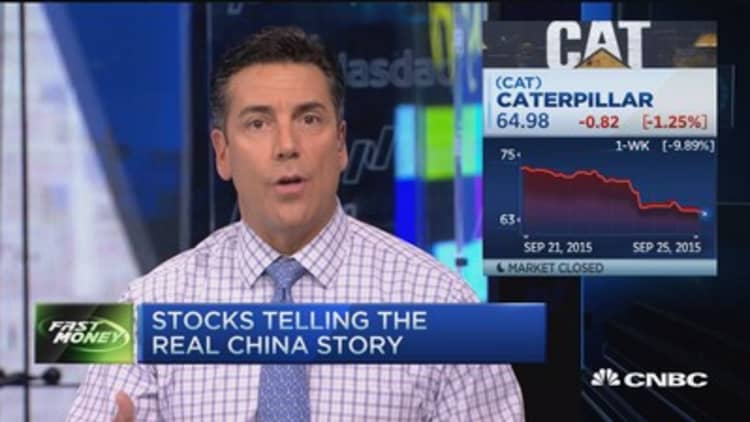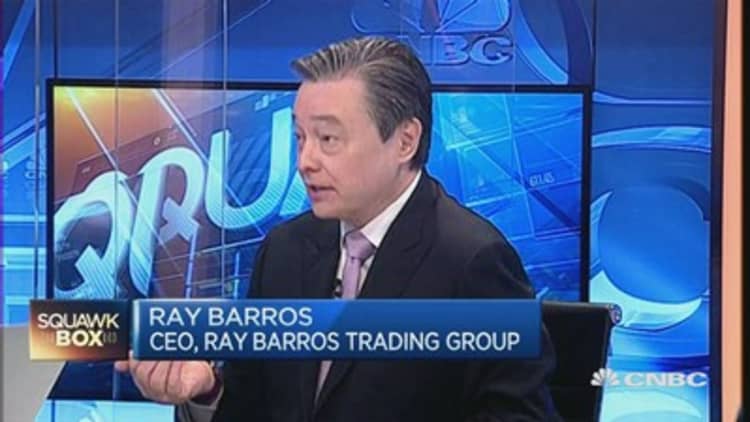While volatility prevails, big institutional investors are ponying up for active managers and leaning away from cheaper, passive investing.
Interest in passive investment strategies has been bolstered in recent years, with investors pouring billions into funds that mirror moves in major indices or portfolios.
The flows have been underpinned by lower management fees charged for passive fund and returns that in many cases have trumped those of much-fancied stock-pickers who actively buy and sell shares.
"You cannot invest in the indices and expect great returns," said Jeffrey Jaensubhakij, director for equities at Singapore's GIC sovereign wealth fund, which doesn't officially state its assets under management, although Jaensubhakij indicated the figure was above $100 billion.
He noted that China's indexes haven't retested their peaks for some time.
"If the indices are highly volatile and cyclical and go through very long, prolonged cycles, you either have to market-time…or find the right companies or use some stock-picking skills or securities selection skills," Jaensubhakij said at the Milken Institute's Asia Summit conference earlier this month.
"More and more investors have to rely on skill in order to be able to generate additional returns," he added, noting index returns on equity and revenue growth are "not that great."
Read More How the world's big pension funds view China
The cost difference between a passive, index strategy and an actively managed one can be large. Actively managed mutual funds in the U.S. typically charge fees of 1 to 2 percent, while, for example, the fee for the SPDR S&P 500 (SPY) exchange-traded fund (ETF), which tracks the S&P 500, is 0.09 percent.
And the extra cost of active management hasn't necessarily equaled a higher return. Around 87 percent of active mutual fund managers for U.S. stocks underperformed their benchmark indexes over 2014, according to the Standard & Poor's Indices Versus Active Funds Scorecard, or Spiva.
In the same year, about 77 percent of global funds, 69 percent of international funds (funds that exclude U.S. equities) and 69 percent of emerging market funds got beaten by their benchmark indexes, according to the Spiva results.

But some large institutional funds still expect to do better with active management.
"As investors, we're going to be exposed to some very slow, low global growth for quite a few years to come," Gordon Fyfe, chief investment officer at pension fund British Columbia Investment Management, which has around $130 billion under management, said at the conference.
Read More The latest active investment trend is passive
"So just buying the indices, just owning the index and trying to survive off the beta of that, is not going to be anywhere as interesting for the next five years as it has been in the past five."
Another fund manager noted that within emerging markets, the indexes simply weren't broad enough.
"We want access to consumer [sectors]," as the middle classes in emerging markets expand, said Hiromichi Mizuno, chief investment officer for the Government Pension Investment Fund of Japan, which had around 137.48 trillion yen ($1.14 trillion) under management at the end of fiscal 2014.

"If you invest into emerging market indices, most of them have very little exposure to those industries. We ended up buying a lot of natural resources or the multinationals," Mizuno said at the conference. "There's a limitation on the use of the index."
But some remain skeptical that the extra fees are worth it.
"In a low nominal return environment, you're not going to get rich by paying managers," Adrian Orr, chief executive of the New Zealand Superannuation Fund, a pension fund with around $29.5 billion in assets, told the conference.


